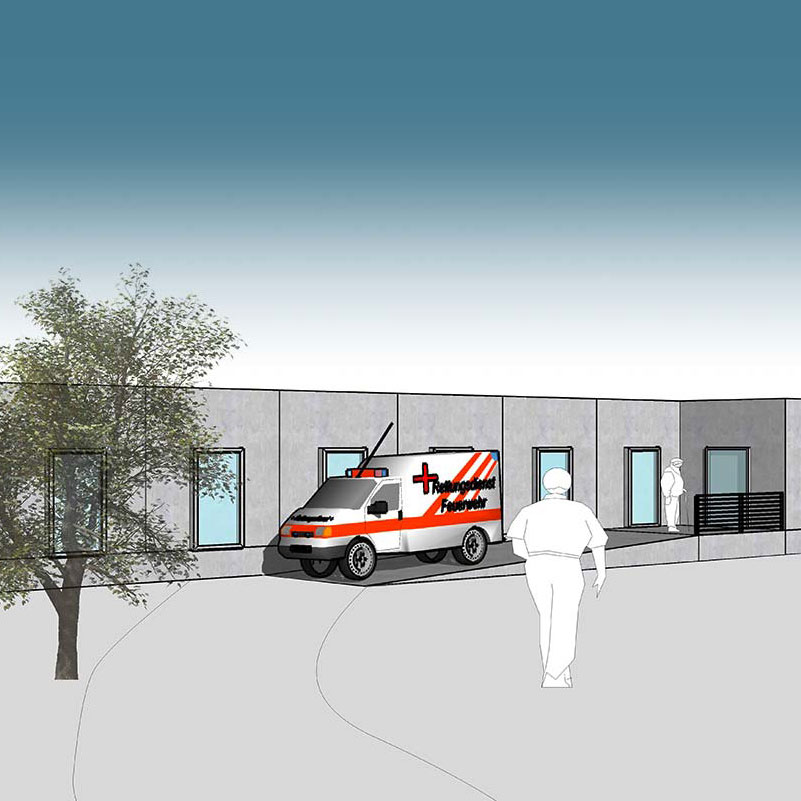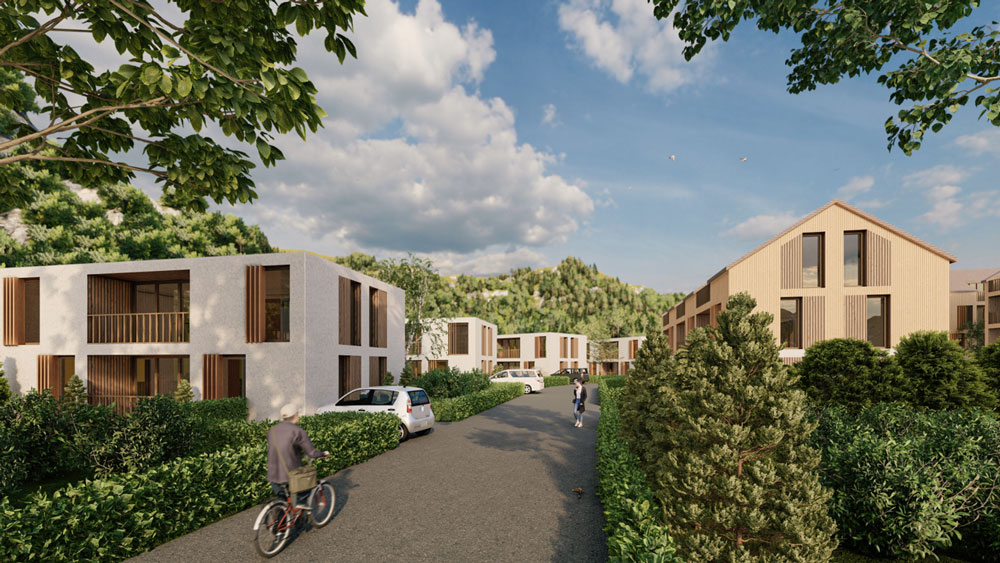Comprehensive consulting services for project development
Project development: develop real estate in partnership
Cities need good, fast, inexpensive and flexible solutions for the future. We are your partner when it comes to the quick implementation of real estate projects. With our solutions, you can complete a building just one year after the start of the project. And do so with the highest level of quality. We also offer services as part of a so-called “Service development”. Participation in our project development within the framework of a joint venture or a project-related collaboration is always possible.
Living in a small space: on a big scale
The average micro-apartment has a size of approx. 20 – 30 m². That makes it perfect for single households, students and trainees.
Living in a small space is a steadily increasing trend. In times of minimalism, sustainability together with resource conservation seem to gain in importance more than ever. Proximity to the city center and the affordability are always prioritized! That is why we are your best partner when it comes to small apartments. We offer convincing solutions.
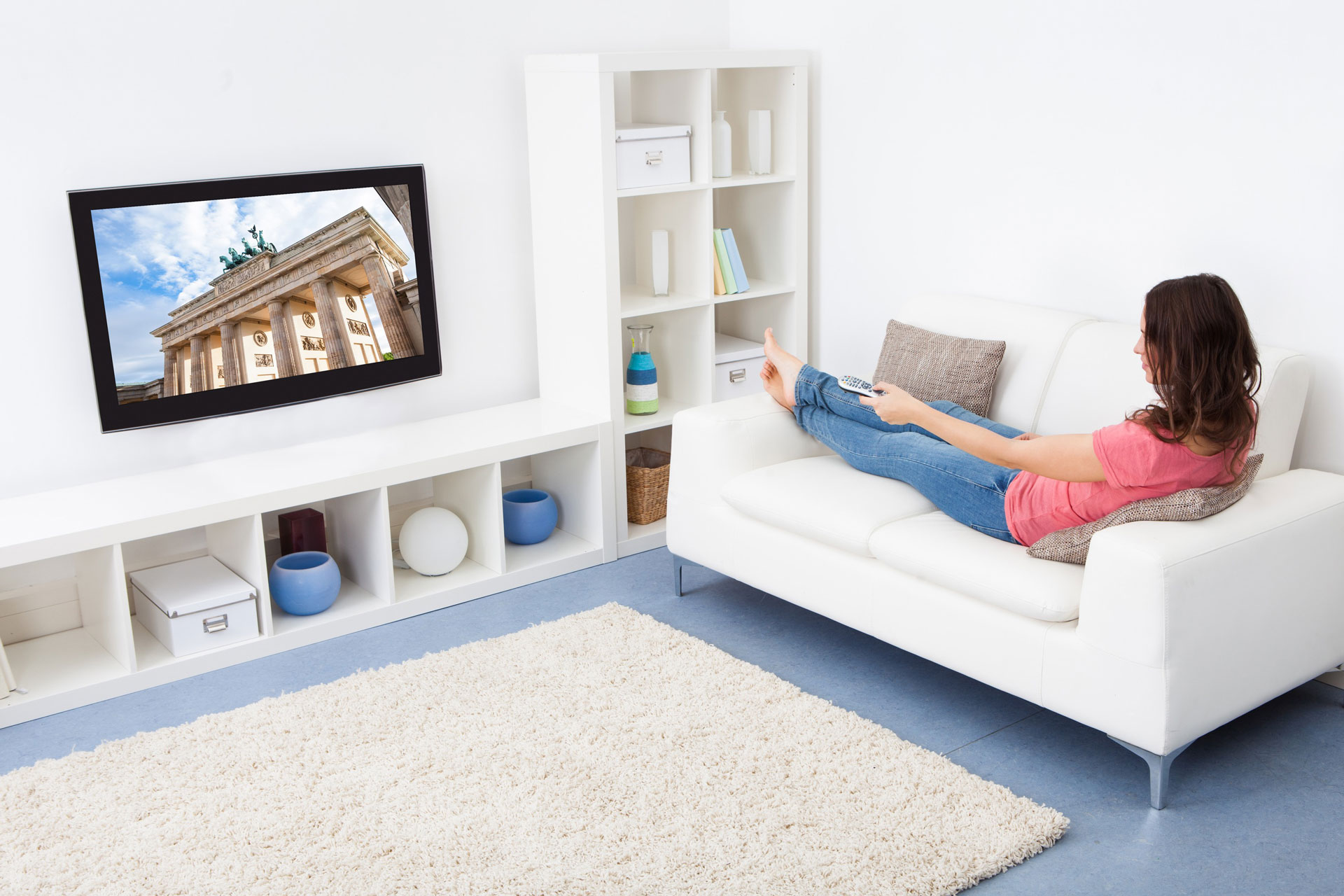
Shorten project times, lower project costs
Many factors in project development cannot be changed. The price and location of the land are usually specified, the construction regulations and municipal statutes are usually fixed.
And yet there is another option:
- We can rely on standardised modular concepts.
- We can increase the speed of project development.
- We can use the experience of developers that have all this expertise.
- We can question the functionality in the floor plans and leave out superfluous components.
- We can accurately adapt the building equipment to the available budget.
- We can increase the flexibility for future usages by using modular concepts.
- We can make housing spaces available in a short period of time.
- We can implement the perfect living experience in smaller apartment floor plans.

Advantages of modular construction with SEMODU:
- modular construction cuts project costs considerably
- modular construction cuts the construction time by more than half
- modular construction saves our resources
- modular construction reduces construction defects considerably
- modular construction using timber can lead to a CO2-neutral project
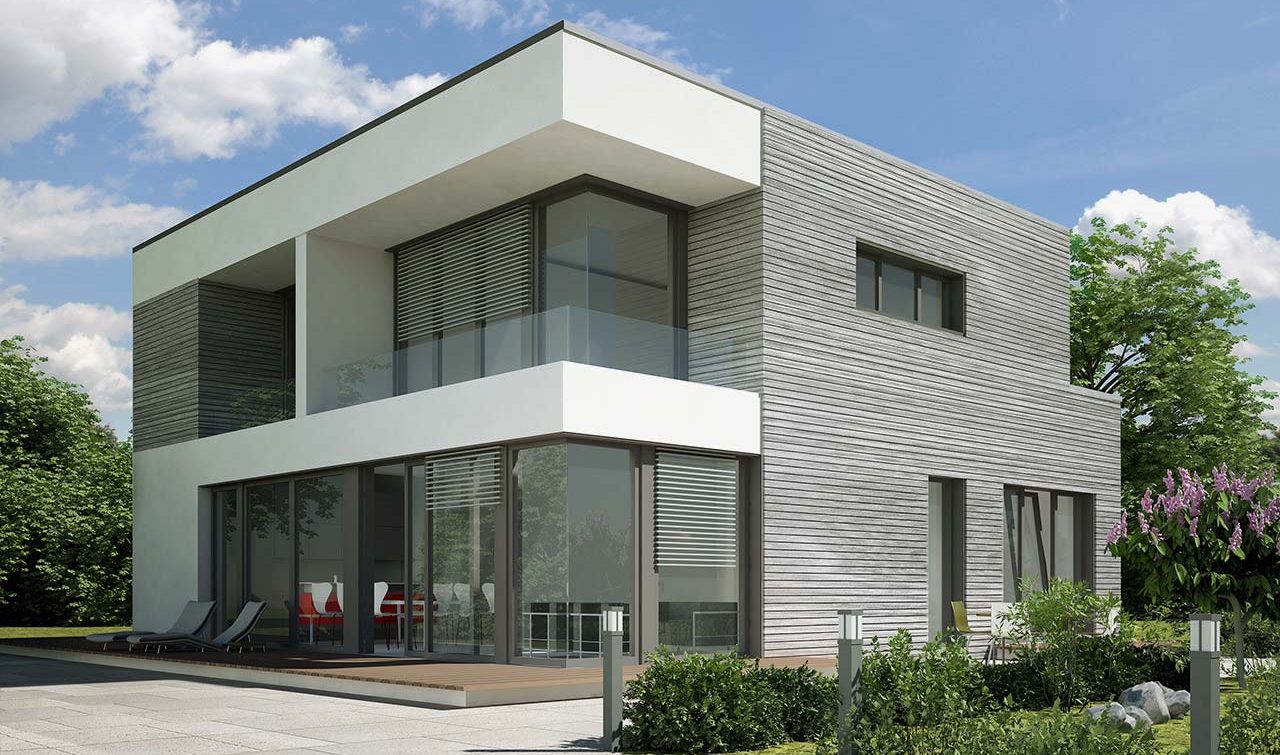
PROJECTS
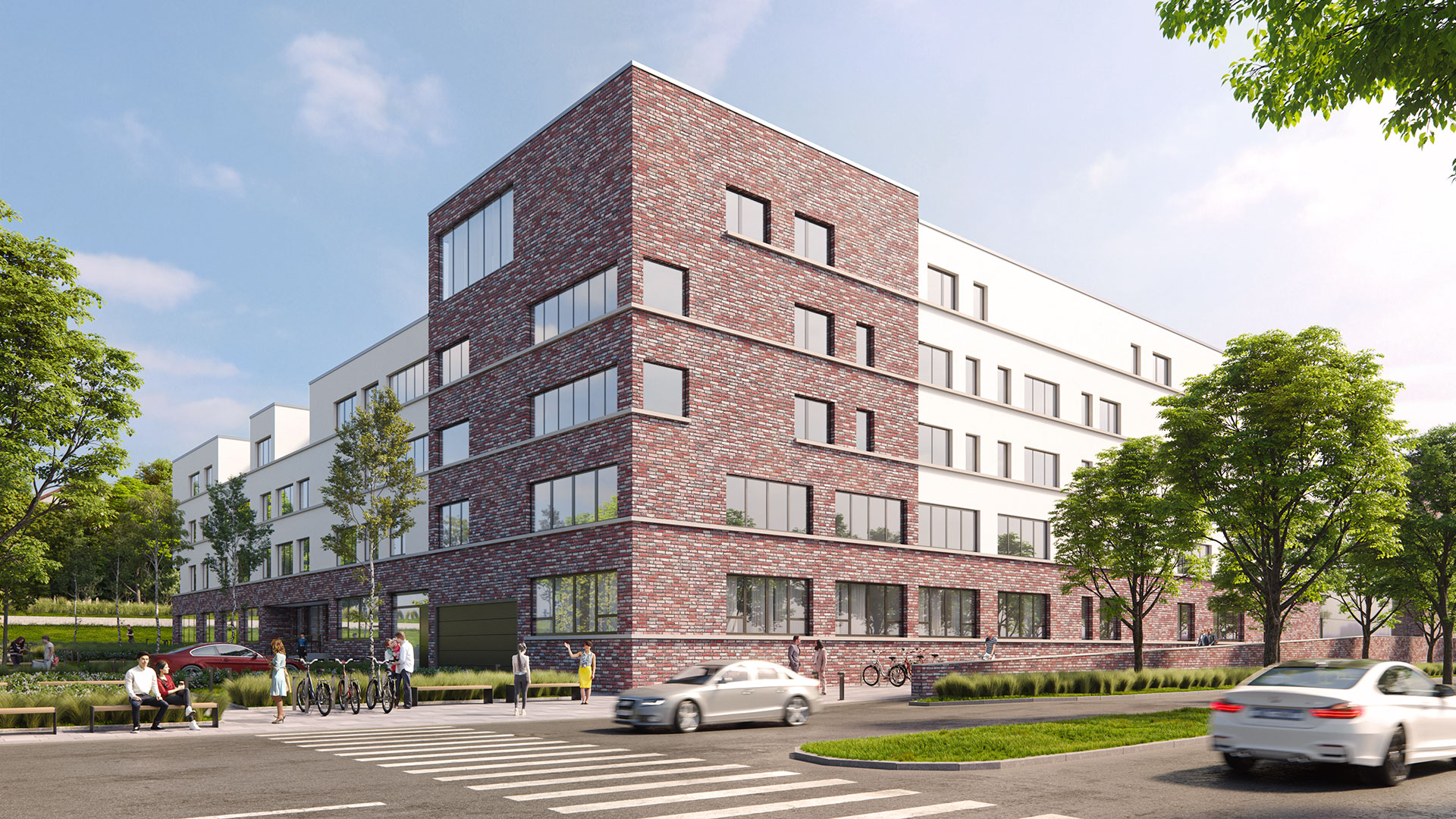
Location: Leverkusen, Neue Bahnstadt Opladen
Starting point:
In the Opladen district of Leverkusen, a new urban project is being built on around 70 hectares, the “Neue Bahnstadt Opladen”.
The aim is to create a new urban district with housing estates, educational center, offices, shops, green and leisure areas. The area of the Neue Bahnstadt is divided into an east and a west side. Here on the west side, directly on the new Europa-Allee, the LEVEL project is being built.
.
Project LEVEL:
This project is a mixed-use property with a share of more than 80% of the total rental area. In addition, there is a day-care and two office offices. Practice areas are located in one of the buildings. LEVEL is an outstanding example of a high-quality architectural concept and a perfect location that meets every requirement. Modern infrastructure, proximity to major universities and the headquarter of DAX-company Bayer AG make Opladen even more attractive to live. The green city district with playgrounds is ideal for families with children. Here we were able to make full use of our project development expertise.
e.
Data:
Total residential area: approx. 4.316 m2
Of which or (that is) publicly funded: approx. 1.300 m2.
Total (number of housing) housing units: 63
Of which or (that is) publicly funded: 18
Residential: approx. 4.316,08 m2
Of which or (that is) publicly funded: approx. 1.300 m2
Corporate Offices/Practices: approx. 472,40 m2
Daycare center: approx. 698,44 m2
Basement/other uses: approx. 469,30 m2
Parking spaces (not for vans or large vehicles): 62

Location: Berlin, Elstal
Starting point:
On the former site of the Olympic Village, taking into account the historical context, approximately 180 apartments are built. The park-like area, which is only about 10 minutes away from the 9 km from the city center of Berlin and at the same time the proximity to the nature reserve “Döberitzer Heide” provide good framework conditions for this. In addition, the excellent connection to public transport and the Berlin motorway ring is a perfect base for harmoniously combining life and work.
Project ODE:
12 sustainably and modularly planned point houses with approx. 180 apartments will create space and living space for couples, singles but also for families. The project has recently been successfully sold to a strategic investor.
Data
Plot area: 16.291 m2
Outdoor area: 11.404 m2
Gross floor area: 16.291 m2
Rental area 14.489 m2
Space efficiency: 81.5 %
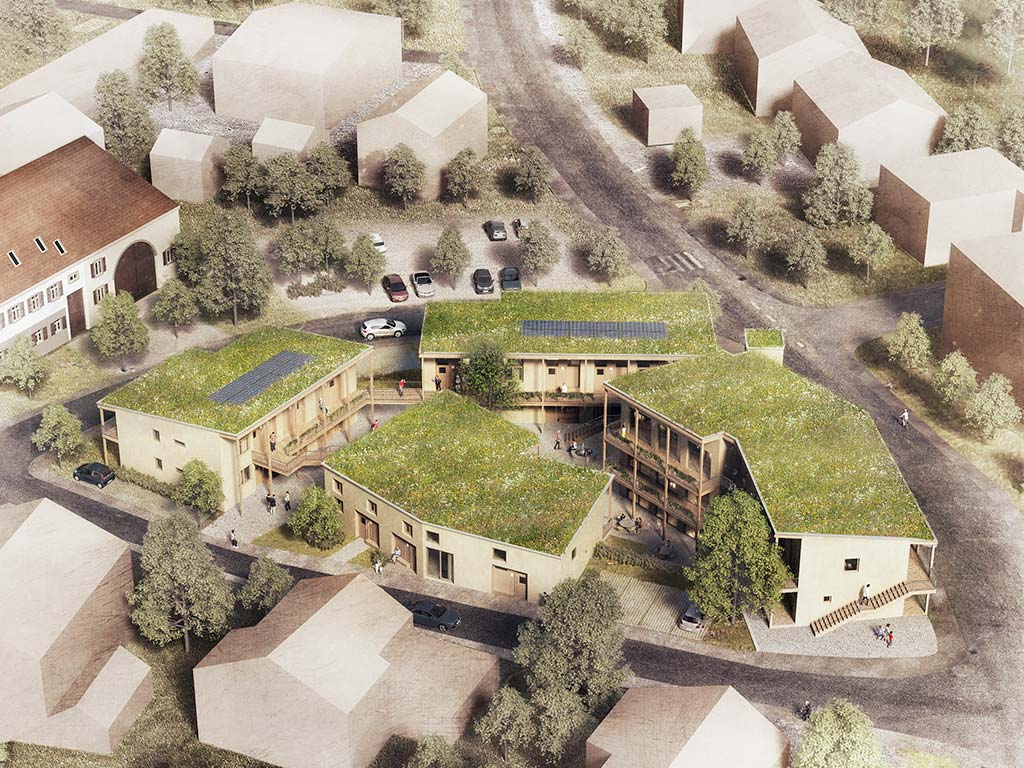
Location: Neubulach
Starting point:
The city of Neubulach with its 5,600 inhabitants is conveniently located to the economic regions of Stuttgart, Böblingen, Sindelfingen and Pforzheim. In Neubulach, industrial and production companies as well as craft and service companies are represented. The city offers everything you need for the everyday life. Particularly noteworthy are the city centre with its half-timbered houses, the visitor mine with a healing tunnel and the Black Forest. Our goal was, on the one hand, to preserve the noisy character of the city centre, but on the other to make a quite comfortable living environment for people.
Project Dorf im Dorf:
The aim is to build a village within a village as a communal housing project. Around a square with a village lime, a fountain and a café, which is also used as an event room, four houses are grouped. The spatial rhythm of the historical street spaces forms the basis of the architectural concept. All apartments are barrier-free and have their own access. The own access is made to strengthen the independence and conserve personal sense of home of the older residents. As a unifying element, the continuous and connected verandas serve as a continuous counterpoint, allowing residents to communicate with their neighbours in short distances.
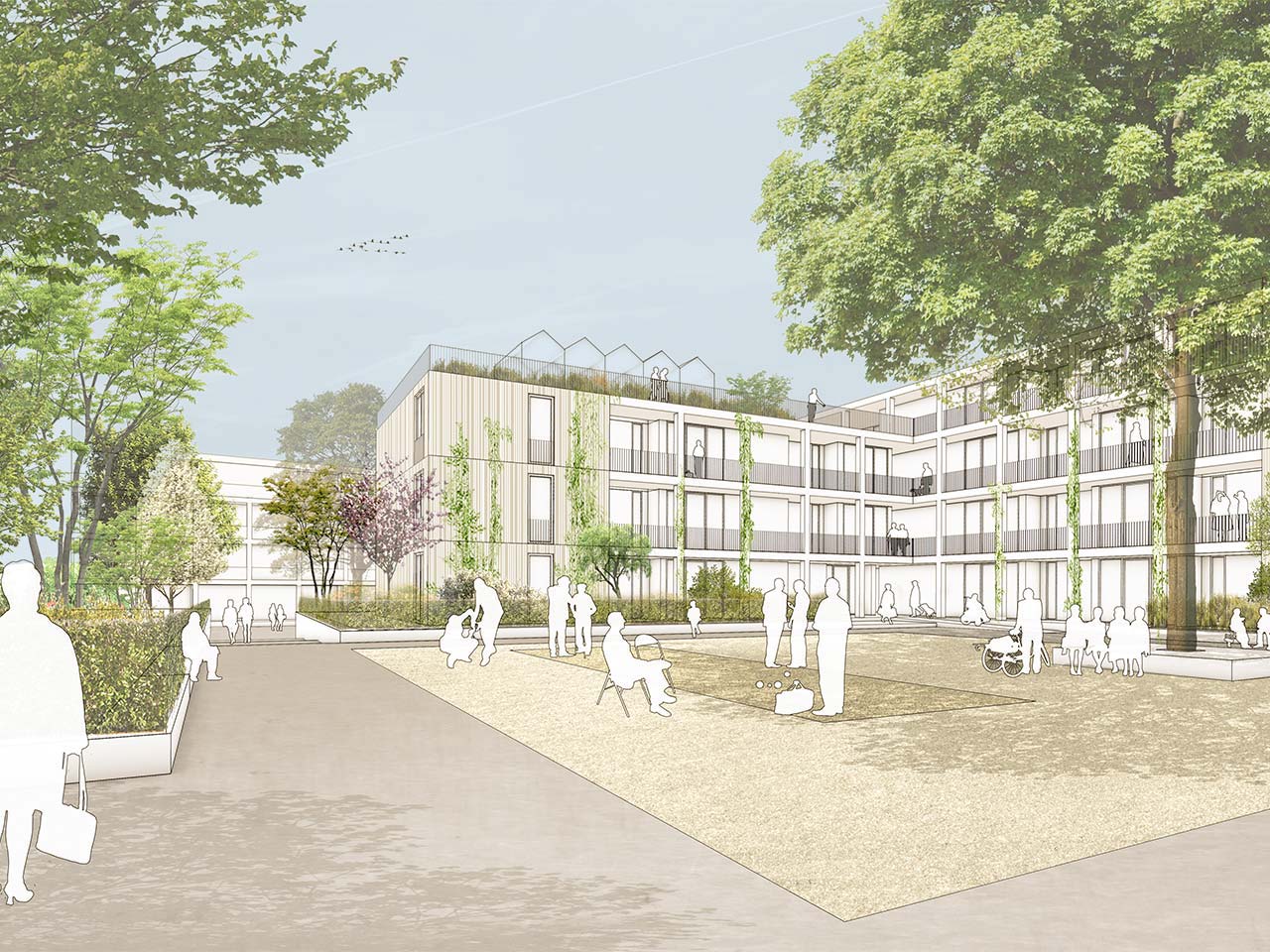
Location: Wernau
Challenge:
In the investor competition announced in 2019, the city of Wernau aimed to create a district with high design quality, sustainability, and a good social mix for the new residential area Adlerstraße Ost III. Accordingly, the city structured the competition in such a way that the decision was made based on the selection of the best concepts, not the purchase price. The prices for the plots were already clearly defined in the competition’s announcement.
The total of four lots also received different thematic focuses. On plot 1, a 7,324 m² property that SEMODU was able to win, the primary goal is to create predominantly age-appropriate apartments.
Project: Am grünen Anger – ecological, innovative and mobile
Working together as a team with Kränzle+Fischer-Wasels architects and the developers from Die Mehrwertbauer GmbH, SEMODU developed a concept for intergenerational living based on serial/modular construction. The competition requirements were exceeded both architecturally and, in particular, conceptually, allowing them to win the competition. The project offers a variety of apartment typologies for diverse life situations and enables a very good social mix with around 37% subsidized or rent-reduced living space. An innovative energy and mobility concept was developed in collaboration with CERO2 for the approximately 115 apartments.
In December 2021, the purchase agreement for the land with the city of Wernau was concluded, marking the start of the realization phase of the “Am grünen Anger” project.
Implementation: 2021 . 2025
Architects: Kränzle+Fischer-Wasels Architects BDA
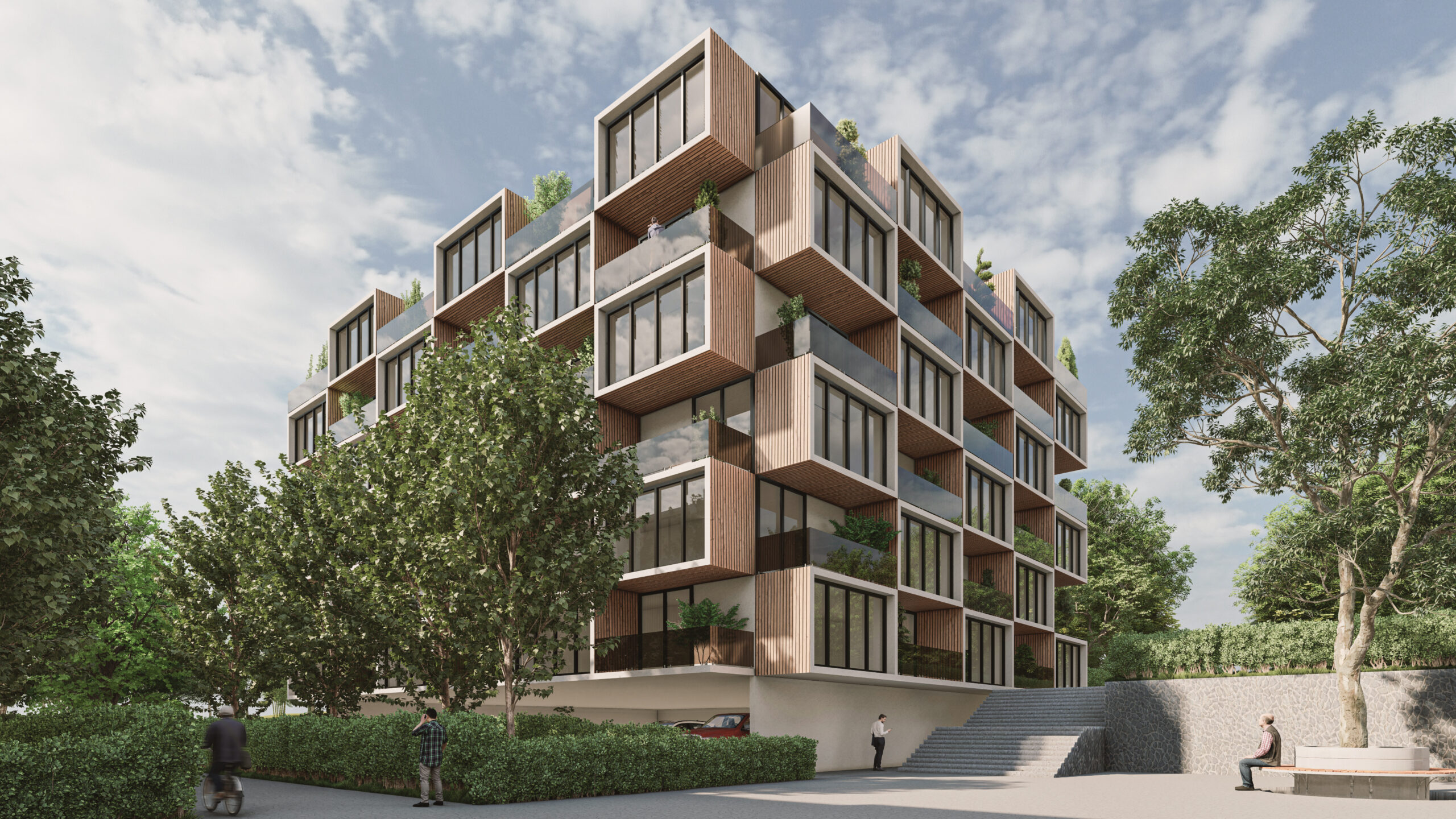
Location: Schwerin, Mecklenburg-Western Pomerania
Starting point:
A life by the water, close to the city or even a bit outside of it, is the dream of many people – and Schwerin offers all of this at once. This region is characterized by its unique natural beauty: rolling hills, hundreds of lakes and mighty cliffs have created an idyllic region. The influx into the city of Schwerin is developing positively and will require new project developments for the housing market in the coming years.
Projekt: Seeblick
The Seeblick project is to become a social and future-oriented urban quarter in modular construction and additionally offer living forms and spaces for every age group. To live up to the project name, the planned residential buildings will be staggered to allow as many apartments as possible to have a lake view. The realization will take place in modular construction.
Data
Total living area: 15,600 m²
Total residential units: 263 units
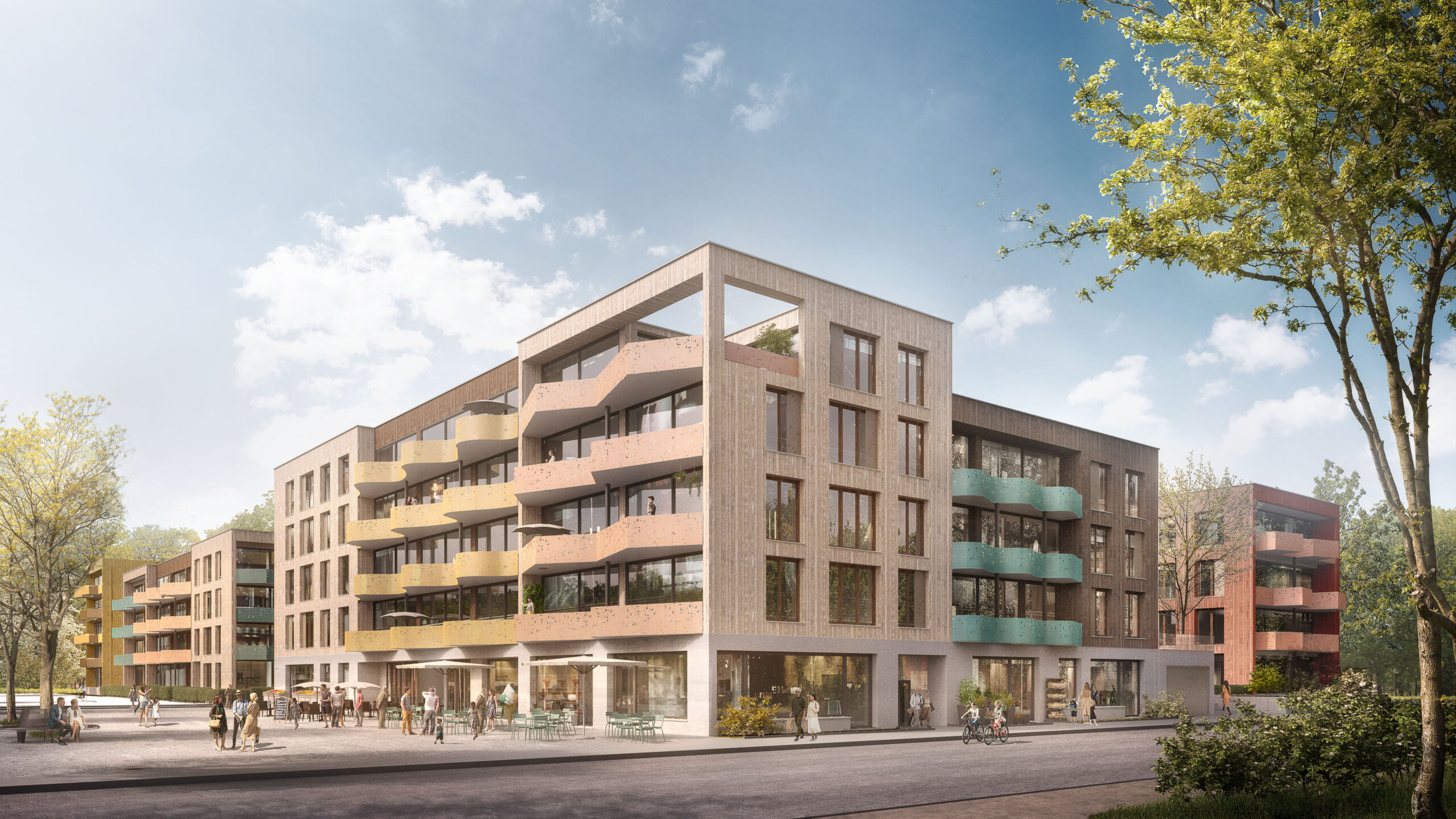
Location: Garbsen, Hanover
Starting point:
Initial situation: In the project “An den Eichen” in Garbsen, near Hanover, an integrative, lively, socially mixed and colorful quarter is to be created, in which the community feeling and the togetherness of the different generations are to be the focus.
Projekt: An den Eichen
In cooperation with Nebel Pössl architects, specific offers will be created for the different living needs of families, singles, students, flat-sharing communities and senior citizens. A mix of 1-6 room apartments in modular construction is planned. The aim is to create inexpensive living space – besides the use in the area of rent, ownership and special use should be given.
Data
Total living space: 12,000 m²
of which publicly subsidized rental apartments: approx. 4,550 m²
Total residential units: 165
of which publicly subsidized: 55 units
of which rent-reduced apartments: 1550 m²
retail trade: 1250 m²

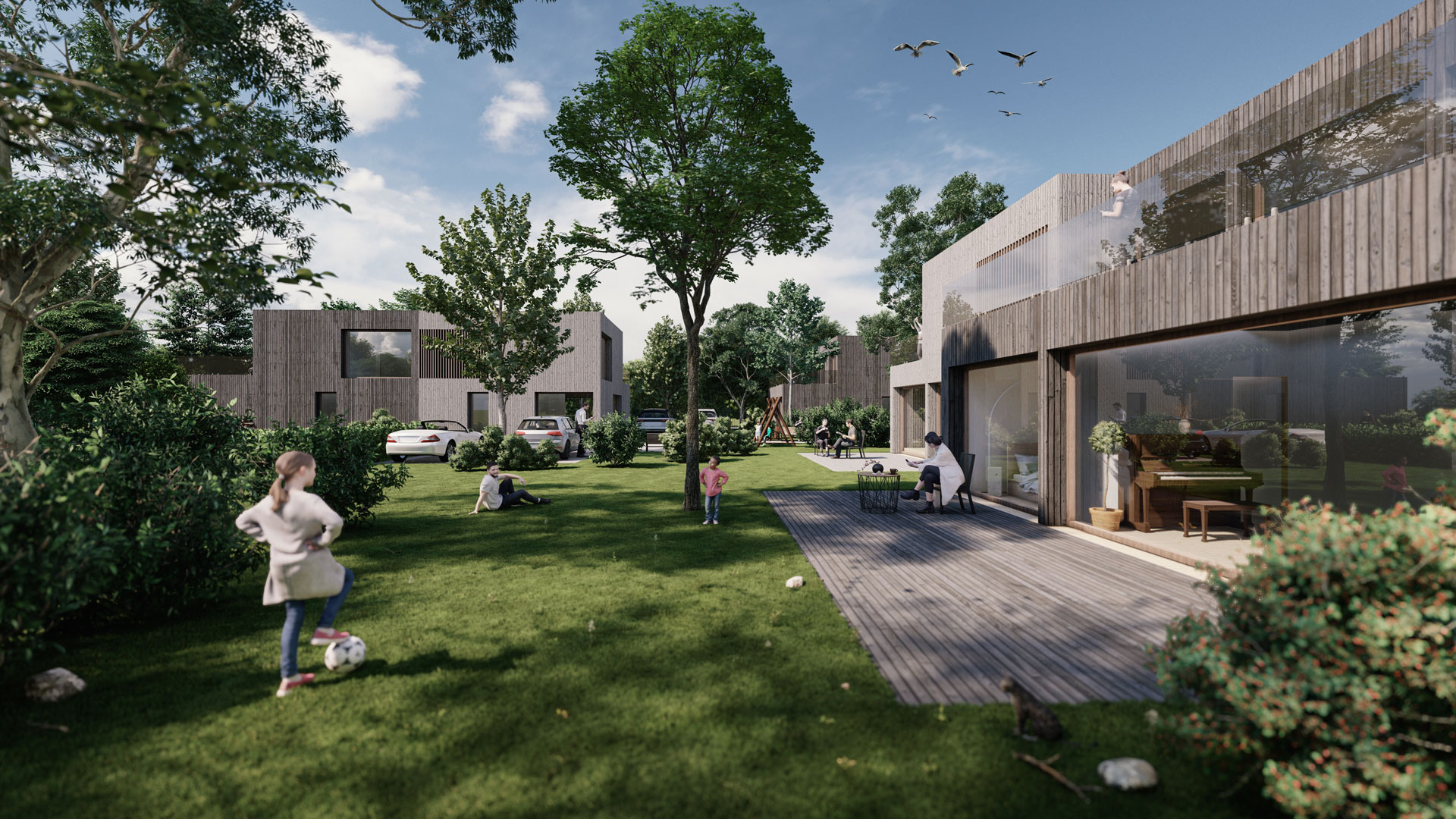
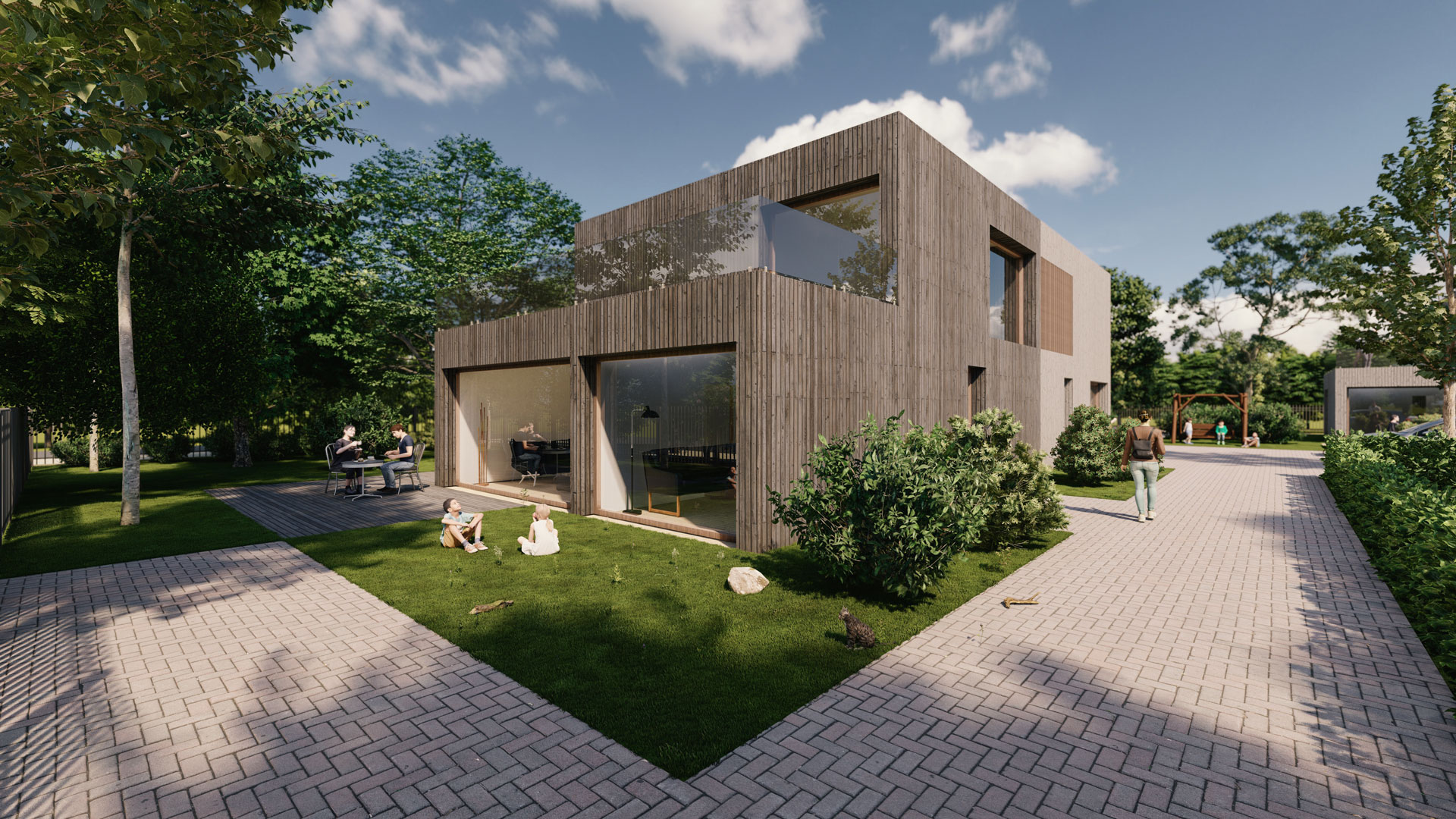
Location: Berlin-Köpenick
Starting point:
The property in Berlin-Köpenick is located between Berlin and Brandenburg and offers a quiet and family-friendly environment. The district is located east of Berlin and offers easy access to the A10 motorway and the center of Berlin. In beautiful Eichwalde, we are developing family homes in the form of 3-5 room apartments.
Project: Eichwalde
In Berlin-Köpenick, in cooperation with Nebel Pössl – Architects, the development of exclusive villas in modular construction is to be realized. These modern and comfortable houses will be developed using a modular technology: ecological and contemporary. In this residential area with many trees, schools and kindergartens, families can easily settle in and live comfortably.
Data
Total living area: 2,000 m²
Total residential units: 1-3 units
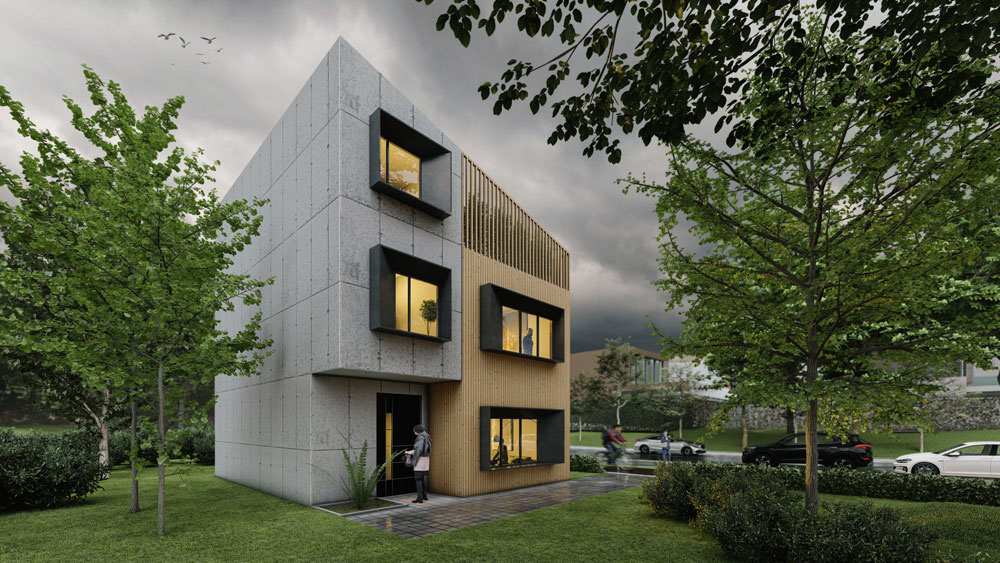
Location: Marbach
Starting point:
In Marbach-Rielingshausen, we have successfully acquired several plots of land from various owners and created a coherent development area of approx. 3,000 m². We have already worked out solutions for the development of the site and initiated the development plan procedure.
Project: Rielingshausen
A new urban quarter is planned in Marbach, comprising compact urban villas, semi-detached and terraced houses based on SEMODU’s modular construction concept.
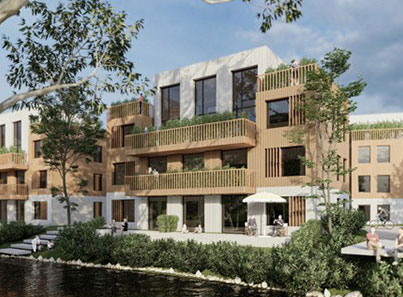
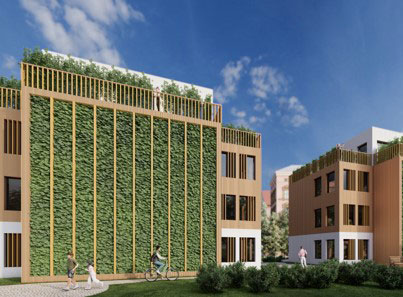
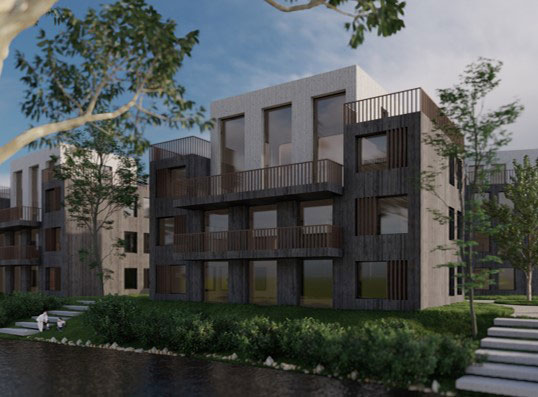
Location: Steinheim
Starting point:
The purchase of the approximately 4000 m² plot of land in Steinheim, which is located directly on the idyllic Bottwar River and is centrally located in Steinheim an der Murr, took place at the beginning of 2022. The previous owner was a community of heirs. The planned project on this property is an innovative combination of work and living space. Modern and flexible premises are to be created here, enabling users not only to live but also to work. This type of environment is becoming increasingly important as many people are looking for a flexible working environment and also the link between work and life is becoming more and more blurred.
Project: The Bottwar
Together with the architects of Werkgemeinschaft HHK from Stuttgart, SEMODU AG is implementing an innovative concept that not only offers maximum comfort for users, but also meets the highest aesthetic standards. A special focus of the project is the landscape architecture and the integration of the Bottwar river into the planning. In doing so, we rely on a sustainable concept that ensures a high quality of stay in the outdoor facilities. The usable space of the project will be divided into approximately 30% commercial space and 70% residential space, with a special focus on the flexibility and functionality of the spaces. For the construction method, we rely predominantly on the modular timber construction method, which not only meets the highest ecological but also aesthetic standards. In addition, we rely on an innovative energy and digital concept by CERO2 and WandWall, which will make the project a showcase reference for the entire SEMODU Group
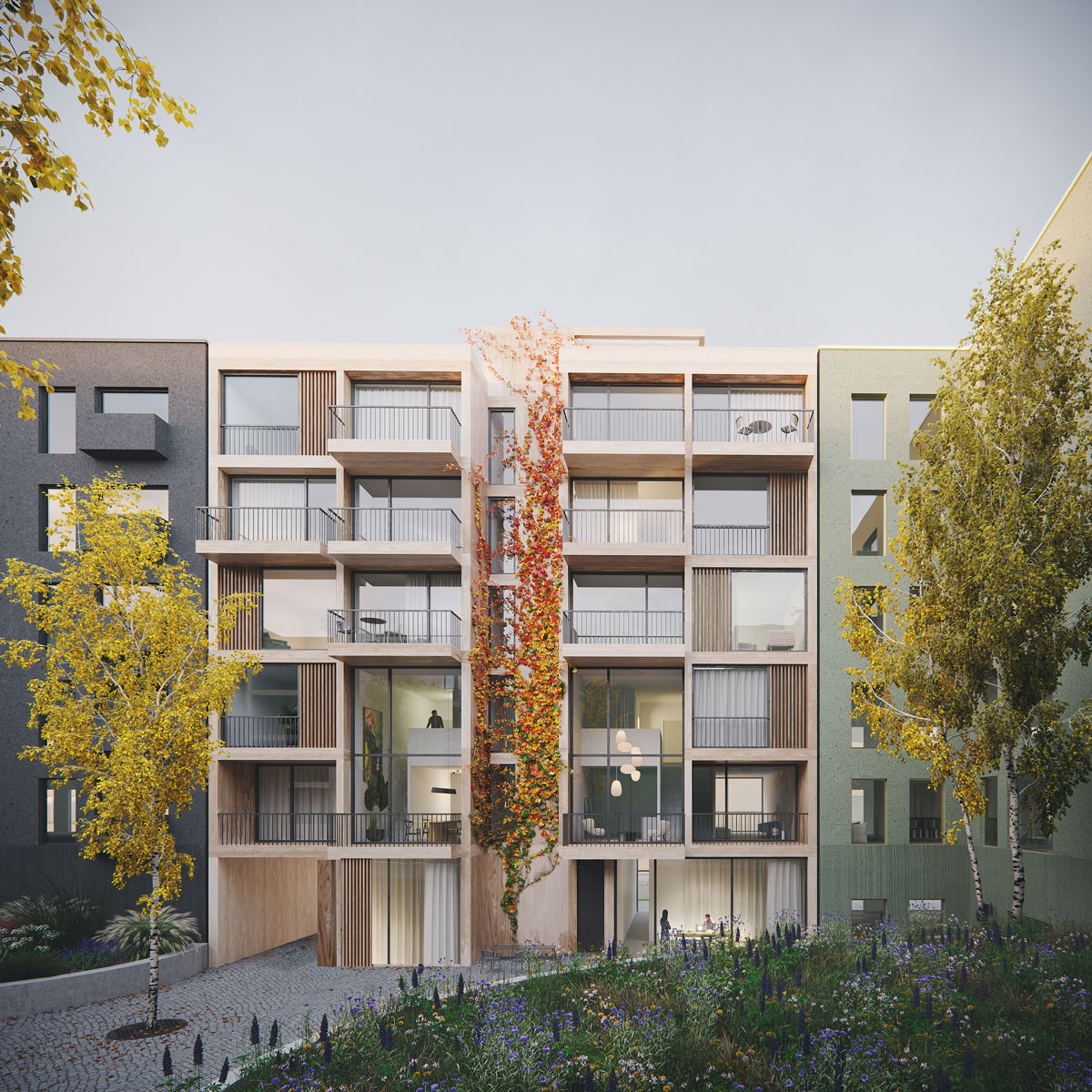
Location: Neckarbogen, Heilbronn
Starting point:
The development of the “Neckarbogen” urban quarter, the first construction phase of which was realized within the framework of the Federal Garden Show 2019, is being continued and supplemented by three further construction sites. Building K5 is part of the urban block perimeter structure. The objective of creating a diverse, mixed-use urban quarter implies attractiveness for all ages and all lifestyles.
Project: TH5: Hybrid timber construction for a diverse and future-oriented urban quarter
Together with Wittfoht Architekten and Mehrwertbauer GmbH, SEMODU AG developed a modern, integral and well-being-oriented living concept. The basis for this is a barrier-free development and a modular structure of the individual floors with 1- to 4-room apartments. The 1st and 2nd floors are designed as maisonettes. Each residential unit faces two sides and has its own outdoor area in the form of a loggia/balcony. The large roof garden is also available for all residents of the building and thus offers many contact and communication areas as well as additional quality of stay. The architecture is bright and friendly, and the building opens up to the communally used green area via these elements. This creates an interesting interplay of inside and outside, of privacy and publicity, of communication and contemplation. The K5 building is designed as a serially manufactured, hybrid timber construction. Despite the diversity presented, the serial timber construction method allows for an economical realization and, due to prefabrication, a particularly short construction time. An optimized construction process results in significantly reduced construction costs, saving resources in building materials and labor.
Data
Total residential area: 893.7 m²
of which publicly funded: 214 m²
Total number of housing units: 14
Of which publicly funded: 3 WE
thereof rent-reduced: 0
retail tade: 4.50
MICRO-CLINICS
EFFICIENT CONSTRUCTION IN TIMES OF CRISIS
Ten days for a clinic for 1000 patients – what is a reality in China is up to now only a dream in Germany. However, it is precisely this degree of efficiency and quick action that is needed when it comes to getting a pandemic under control. In order to be able to treat a large and rapidly increasing number of sick people, capacities must be increased rapidly.
We faced this challenge and, with the help of experienced intensive care physicians, we have developed two concepts for clinics, both for moderately and severely ill patients. This modular micro-clinic can be set up on site in just a few days. The modular design makes it possible to combine rooms in different ways and thus to react to the most varied situations. This is particularly important in a hospital, where entrances, exits, flows of patients, staff, and material disposal must be organized.
The first clinic concept offers space for 36 patients and 20 people on the staff side and is therefore specially designed for the treatment of the coronavirus but can be expanded if necessary. The rooms are organized in such a way that the paths of patients and staff do not cross unnecessarily. The patients arrive from the south, via the entrance area, directly into the shock rooms, from where they are brought to the sides into the patient rooms after initial treatment. There are rooms for the storage and disposal of materials directly opposite the shock rooms. The supply takes place centrally, which minimizes walking distances within the clinic and therefore valuable minutes can be saved. This is particularly important for waste, so that it can be transported as quickly as possible and without much contact. All rooms offer enough space for beds and equipment as well as a washbasin and disinfection area. Cleanliness is particularly important with infectious diseases, which is why there are washbasins and disinfection areas in the hallways.
The situation is similar in the second concept. Since it is intended for 20 seriously ill people and 10 people on the hospital side, patients are brought directly to their rooms via the entrance.
Both concepts are not only designed to fight the current COVID-19 pandemic but can also be used as emergency clinics for all crisis situations worldwide and, thanks to the modular design and serial prefabrication, they can be dismantled, converted or reused at another location after their use.
